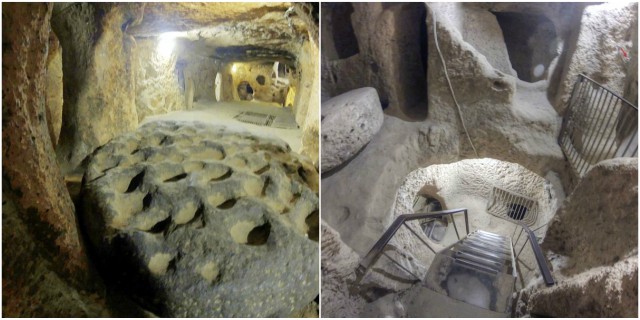In Cappadocia, Turkey, there are around 35 underground cities. The deep valleys, the splendid rock formations, and the ancient subterranean hideouts were carved by volcanic ash rock millions of years ago.
The volcanic rock proved to be ideal building material for the underground cities in this area which are the main attraction of Central Anatolia. The deepest underground city is Derinkuyu, while the widest one is the underground city of Kaymakli.
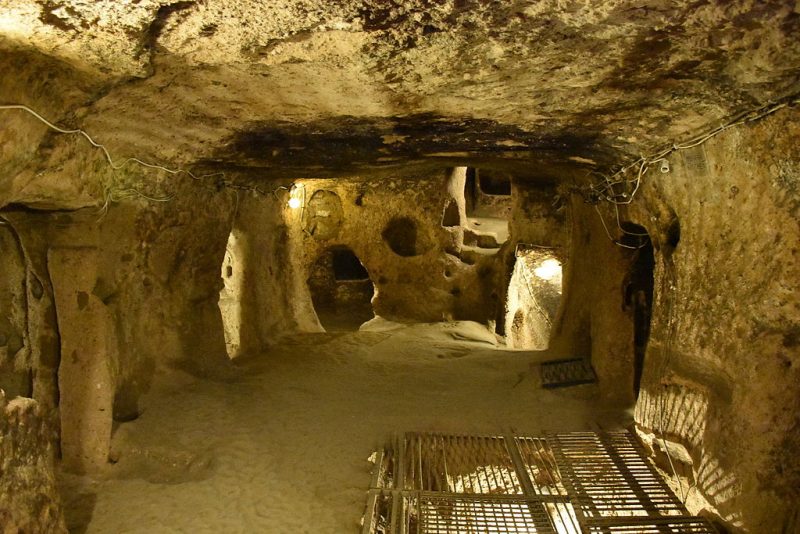
Kaymakli is one of the most visited underground cities in Cappadocia. It is located right beneath the Kaymakli Castle. The ancient name of the city was Enegup. This underground city had eight floors, but only four of them are open for visitors. Kaymakli was once home to more than 3,000 people.
People built their homes around the tunnels of the city in order to protect themselves from invading Arabs and Roman soldiers. The tunnels go as deep as 40 meters. The tunnel network is designed as a puzzle. The tunnels are steeply inclined, narrow, and low. The city was connected with Derinkuyu underground city through a nine-kilometer tunnel and served as a good hiding place.
The nature of the entire city is organized, structured, and very well thought out. Ventilation was very important for the city, and that is why each space of the city was organized around ventilation shafts. The ventilation system proved to be very successful.
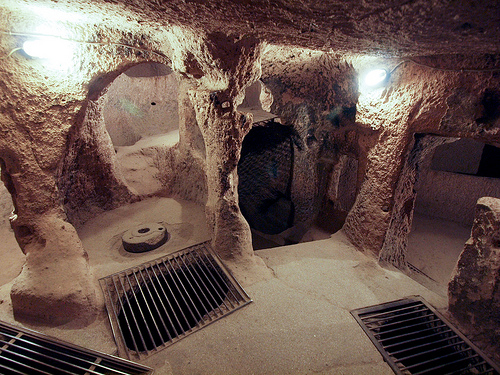
The small first floor of Kaymakli was used as a stable. Animals were difficult to take downstairs to the lower floors, and that is why the first floor was used as a shelter for livestock. From the right side of the first floor, there are rooms which were used as living spaces. On the right side, there is a passage and a door which leads to a church.
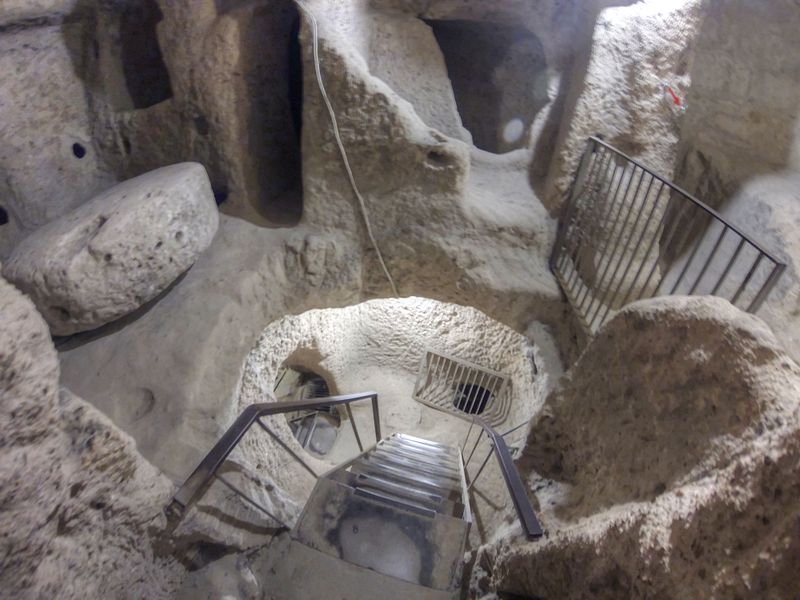
The second floor also contained some living spaces, but the church mostly occupied it. The nave of the church provided the central approach to the high altar. Just after the nave, there were two apses and a font used for baptism. Around the church, there were graves of religious people. On this floor, there is also a big circular lock stone which was used for sealing the entrance.
Out of the four floors, the most important was the third. It is the largest and the most spacious. It contained communal kitchens, a winery, and several oil presses. There is a huge volcanic rock with holes which people used for cold copper processing. On the fourth floor, there is an inordinate number of storage rooms. They suggest that there was a large population in the city.
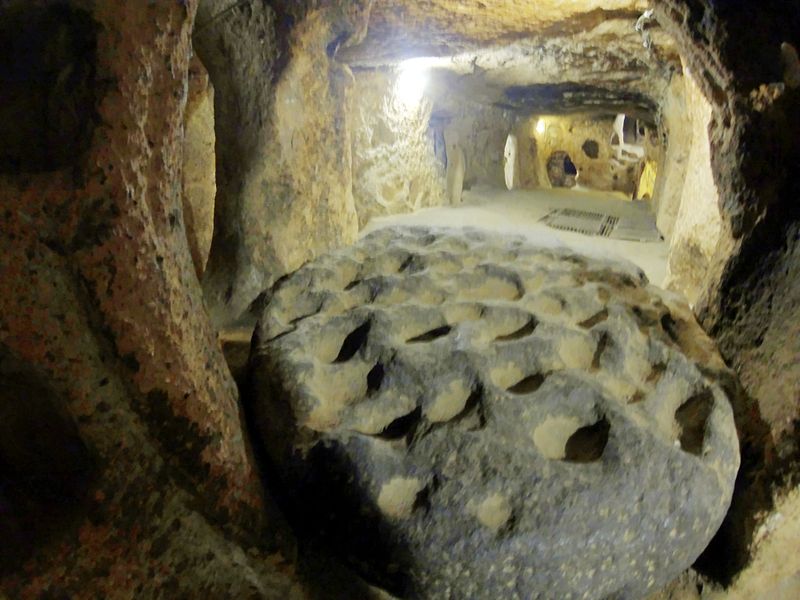
In 1964, four of the eight floors were open for visitors but did not get lighting until 1968. In 1985, Kaymaklı Underground City became part of a UNESCO World Heritage site.
